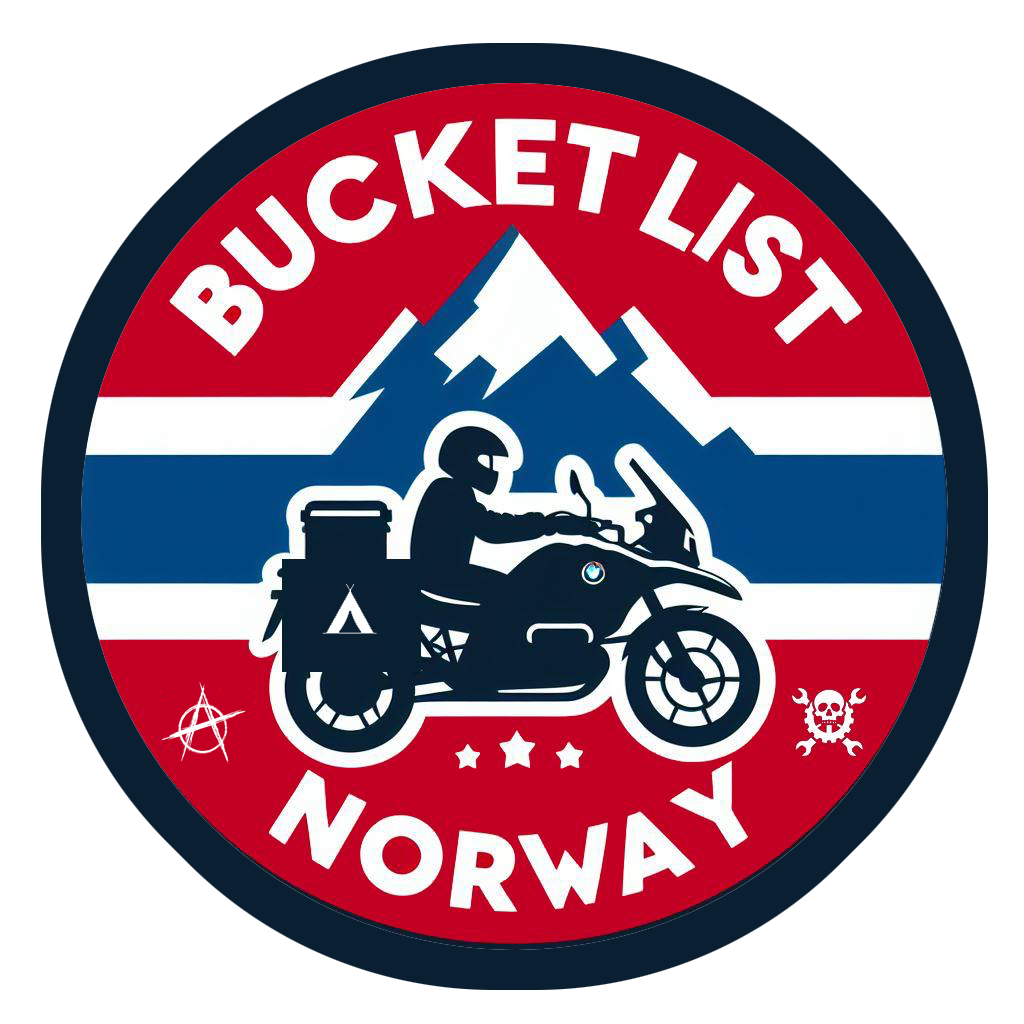Emergencies
 In case of an emergency, note the three different emergency numbers used in Norway:
In case of an emergency, note the three different emergency numbers used in Norway:
110 – Fire
112 – Police
113 – Ambulance
If you happen to dial 113 but ment to call the police at 112, you will of course be transferred.
Pro tip: If you need help in an area without mobile phone coverage, remove the SIM card and dial 112 or 911. Those are international emergency numbers, hard coded into each mobile phone. This means that if your roaming operator don’t have coverage, other Norwegian network operators might have – and you can use their network for emergency calls – but only to 112 or 911.
If you get involved in or are witness to an accident, remember that most GPS units have an app called “Where am I?”. Use this to get an exact location when calling the police.
Language
English is our second language in school, so all Norwegians speak and understand English.
Eating while traveling

Eating out in Norway is expencive. Not much you can do about it if you want to ride here, but there are a few things to be aware of. First of all, any type of food prepared by others will costs you. Doesn’t matter if it is a fast food kitchen by the road or a restaurant. A hot dog at the gas station will cost you 5-6 Euro. A decent hamburger, 15+ Euro and a bottle of water, 2.5 Euro.
Many road travellers stop at grocery stores to buy what they need for an outdoor lunch or dinner – much more pleasant and far cheaper.
The major grocery stores to look for are REMA 1000, Coop Extra and Kiwi – you’ll find them everywhere. If you want to treat yourself, Meny and OBS has more to choose from, at a slightly higher prize.
Speeding

To exceed the speed limit in Norway will hurt your wallet – or even cost you your drivers license. The uniformed police cars are easy to spot, but they can measure your speed from far behind… They also use anonymous cars. In addition we have speed cams, but they measure – and take your picture from the front, so those will not hurt you. Some of the cams even measure your average speed over a distance.
What you need to look out for as a biker, is the radar controls. If caught speeding you can get fines up to a 1110 Euro – or the cop take your license…
It it stricter to speed in low speed areas where you can hit pedestrians.
30/40/50/60 km/h zones:
10 km/h faster = 220 Euro. Up to 20 km/h faster = 600 Euro. Up to 25 km/h faster = 900 Euro. Over 25 km/h = they might take your license.
70 and 80 zones:
Up to 10 km/h faster = 220 Euro. Up to 20 km/h faster = 500 Euro. Up to 30 km/h faster = 900 Euro. Up to 35 km/h faster = 1070 Euro. More than 35 km/h faster = your license is in danger…
90, 100 and110 zones:
Up to 10 km/h faster = 220 Euro. Up to 20 km/h faster = 500 Euro. Up to 30 km/h faster = 900 Euro. Up to 35 km/h faster = 1070 Euro. Up to 40 km/h faster = 1110 Euro. More than 40 km/h faster = licence might go…
Toll roads

It’s expensive to build roads in Norway and many of our main roads are toll roads. But who wants to ride them? If you happen to be on one, it doesn’t really matter, because the toll collection is automated. A picture is taken from the front of the car to get the license plate, so bikers are off the hook and can drive for free. The exceptions are serviced toll roads i.e. for tourist attractions like Dalsnibba etc.
Ferries

To enjoy the best roads in the west of Norway, you will encounter ferries. A lot of them. As for toll roads, the payment is automated, and you will receive an invoice some weeks later. But in addition to invoice you for the trip, the ferry company adds an invoice fee. If you take a few ferries during your Norway trip, these fees can sum up to a decent amount which you can avoid if you sign up for a AutoPASS for ferry prepayment agreement or register an account at ferrypay.no.
With this AutoPASS, you prepay a certain amount and your ferry trips will be deducted from your account after each trip – but without the invoice fee. With the prepaid agreement, you get a small discount.
You do not get a discount with ferrypay.no, but on the other hand you don’t have to prepay anything either.
More information about ferries in Norway can be found here.
Note: If you are not too many bikers together, drive to the front of the lane. The ferry workers actually want the bikers in front and first aboard, so they can fit you on places not big enough for cars. Don’t be shy! Smile and nod:-)
Camping sites
 Camping in Norway is actually one of the few things not expensive at all – compared to i.e. Germany or Europe in general. To camp with a tent, you normally pay 15-20 Euro. A simple camping cabin around 40 Euro and more comfy cabins 45-50 Euro. If camping, remember to buy mosquito repellent! Especially in the inland, the mosquitos can be a pain in the ass. A good starting point for finding a camp site, is the campingportalen.com.
Camping in Norway is actually one of the few things not expensive at all – compared to i.e. Germany or Europe in general. To camp with a tent, you normally pay 15-20 Euro. A simple camping cabin around 40 Euro and more comfy cabins 45-50 Euro. If camping, remember to buy mosquito repellent! Especially in the inland, the mosquitos can be a pain in the ass. A good starting point for finding a camp site, is the campingportalen.com.
Outdoor Recreation Act
In Norway you don’t have to go to a campsite to camp. Unless you want to use the facilities, of course.
Everyone in Norway can enjoy the right of access to, and passage through, uncultivated land in the countryside. The right is an old law called the allemannsrett (lit. the everyman’s right), that was codified in 1957 with the implementation of the Outdoor Recreation Act.
But there are some basic rules that must be followed when camping:
- You are allowed to camp if you are at least 150 meters away from the nearest inhabited house or cottage.
- Campfires are not allowed in the forest areas between 15 April to 15 September, unless it obviously can not lead to a fire.
- Tourists are allowed to stay in one spot for 24 hours. After that, you need to ask for permission from the landowner to stay – or move on. This rule excludes the mountains and the national parks.
You can read more about the Outdoor Recreation Act at Wikipedia.
Alcohol

To buy alcohol in Norway is a chapter by itself… That’s why I have written one 🙂 Beer no stronger than 4.6% alcohol can be bought in grocery stores, but only between 08.00-20.00 on weekdays and between 08.00-15.00 on Saturdays. Local authorities can open for sale till 18.00 on Saturdays – which is the case most places is south & east of Norway – and all major city’s – but we don’t always drive there, do we? You can not buy alcohol on Sundays. A can of beer 0,5 liters will cost 2,5–3 Euro.
If you want stonger beer than 4,6%, vine or spirits, you need to visit “Vinmonopolet”. Those shops are NOT found everywhere, so you need to plan. Here is a page where you can find Vinmonopolet-shops in Norway by typing in your location.
Anything missing from this list? Leave a comment below, and it will be added. 🙂

Hello and thank you for your great web site.
Speaking of ferries, when you go to Norway with a motorcycle you have not to pay toll roads (not speaking of gravel roads or private roads with toll stations), so you don’t need an AUTOPASS account for the ferries, instead there is the ferrypay.no web site where you can register for automated paying of ferries.
I Did do that last year, and there are no invoice fees.
Greatings from France
Hi Roland and thanks for adding ferrypay.no. In fact you can use either of the two… The AutoPASS link I have added, brings you to ‘AutoPASS ferry’. But as stated on ferrypay.no: “The FerryPay agreement is ideal for anyone who does not have an AutoPASS tag or AutoPASS for ferry prepayment agreement.”
I will update the post. Thanks!